What's New
Displaying results 1351 - 1360 of 4899
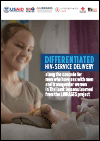
Resource | Publications,
The number of new HIV infections in Thailand has been in decline for more than 10 years, but HIV prevalence continues to be high among members of key populations (KPs) that account for more than 50% of all new infections in this concentrated epidemic.
The Key Population-Led Health Services (KPLHS) Model was developed by the Thai Red Cross AIDS Research Centre (TRCARC) and is currently being implemented by communitybased partners through funding provided by USAID/PEPFAR through the LINKAGES Project managed by FHI 360. KPLHS was started in four provinces (Bangkok, Chiang Mai, Chonburi and Songkhla) in Thailand, is now placed in the national HIV/AIDS strategy for scale-up, and receiving financing from the Thai National Health Security Organization (NHSO). The model defines a set of HIV-related health services, which focuses on improving HIV
service uptake among KPs including men who have sex with men (MSM), male sex workers (MSW), transgender women (TGW), and transgender women sex workers (TGSW) and delivers differentiated HIV services, tailored to the needs of the specific subpopulation.

Resource | Tools,
This Gender-Based Violence (GBV) Quality Assurance Tool offers health care providers, facilities, and program planners a straightforward way to start, strengthen or expand post-GBV health services through the use of evidence-based standards.

Resource | Publications,
This document is collaboratively developed by MPact Global Action for Gay Men’s Health and Rights (formerly known as MSMGF) and the World Health Organization (WHO), together with UNDP and UNFPA. It is an updated, abbreviated adaptation of WHO's 2015 technical brief: "HIV and young men who have sex with men"
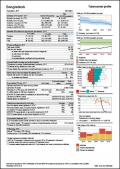
Resource | Reviews and Snapshots,
Tuberculosis country profiles are generated automatically based on data reported by countries and which are held in WHO's global TB database.
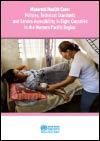
Resource | Publications,
WHO has developed evidence-based maternal health recommendations for reducing maternal mortality and morbidity. This review compares national guidelines and protocols, implementation and health system standards to WHO recommendations for eight countries that account for 96% of maternal deaths in the Western Pacific Region.

Resource | Publications,
The 2030 Agenda for Sustainable Development will not be achieved without the active and meaningful involvement of the private sector. Can the private sector be held accountable for protecting women’s, children’s and adolescents’ health? And if so, who is responsible for holding them to account, and what are the mechanisms for doing so?
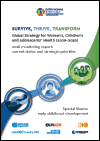
Resource | Publications,
The 2018 monitoring report for the EWEC Global Strategy for Women’s, Children’s and Adolescents’ Health (2016–2030) is based on data from 2017 and early 2018 for the 60 indicators in the EWEC Global Strategy monitoring framework. Dashboards in Annex 2 signal where progress is being made or lagging.
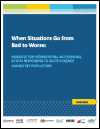
Resource | Publications,
As the violence directed at members of key populations most affected by HIV — gay, bisexual, and other men who have sex with men; people who inject drugs; sex workers; and transgender people — intensifies and becomes “acute” in many parts of the globe, this brief offers guidance to international and regional actors who wish to be part of an effective and coordinated response. International and regional actors who may benefit from this guidance include, but are not limited to, key population networks, governmental bodies, donors, embassies, security experts, nongovernmental organizations (NGOs), media, research institutions, United Nations (UN) agencies or offices, and human rights organizations operating globally or regionally.
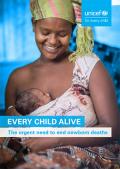
Resource | Publications,
Deaths among children aged one month to 5 years old have fallen dramatically in recent decades. But progress in reducing the deaths of newborn babies – those aged less than one month – has been less impressive, with 7,000 newborns still dying every day. This is partly because newborn deaths are difficult to address with a single drug or intervention – they require a system-wide approach. It is also due to a lack of momentum and global commitment to newborn survival. We are failing the youngest, most vulnerable people on the planet – and with so many millions of lives at stake, time is of the essence.

Resource | Publications,
The 2017 annual report of the flagship programme initiative, Making Every Woman and Girl Count (MEWGC), provides an overview of the key achievements during the reporting period, including a review of activities and progress in implementing the MEWGC programme at the global, regional, and national levels. It also contains an update on resource mobilization and advocacy, a review of challenges and lessons learned, and a brief overview of global-, regional-, and pathfinder country–level plans for the forthcoming year.





